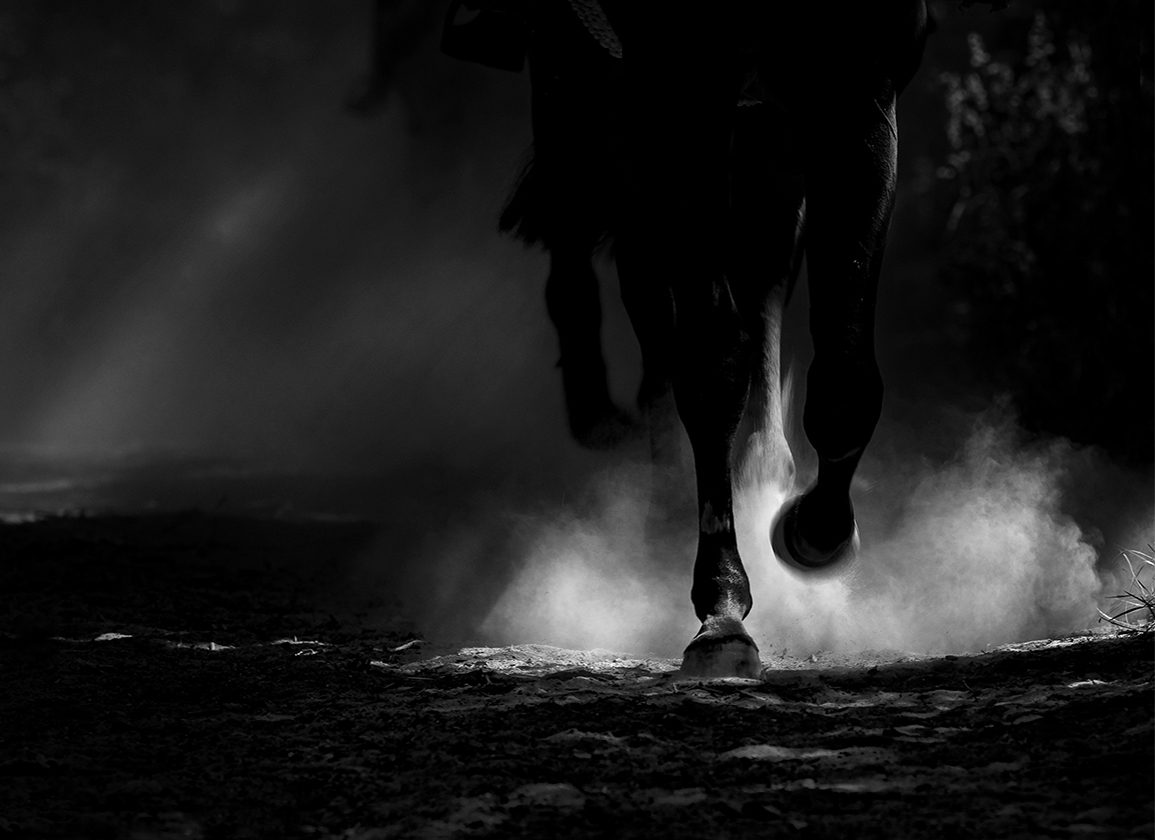By Emma Berry
It could be a little daunting for a modern-day artist to follow Sir Alfred Munnings in the exhibition space of Newmarket's National Horseracing Museum. Munnings is an iconic name in the sporting art world, and many of his best known images of racehorses at the start were created from his makeshift studio in an old rubbing house on Newmarket Heath which exists to this day. He lived and breathed his subject, but so too does the photographer Jayne Odell FRPS, whose striking black and white images are exhibited in the museum until Dec. 4.
Odell, one of just 600 Fellows of the Royal Photographic Society, lives in the centre of Newmarket, her home backing on to one of its most historic yards. This prompted a five-year project devoted to studying the beating heart of the town, which is the everyday training of thoroughbreds.
“I moved here and I got hooked on it,” she says. “Seeing the horses out in the morning and the whole rhythm of the town.
“I realised we were behind Charlie Fellowes's old yard. We started to hear the sounds of the yard and I got a bit intrigued and then started going out to take pictures and gradually built up a body of work. The love grew and then the opportunities seemed to grow from that.”
Love is a theme which runs through the substantial monochromatic exhibition, from the photographer's own eye for a subject she clearly finds absorbing, to the day-to-day interactions between the horses and those charged with their care, and the extraordinary attention to detail that goes into the routine of every stable yard.
“Look at pride in their work,” Odell exclaims as she guides TDN through the exhibition. “I love the things that go on in the background behind the racing itself–the farriery, the valets, saddle makers and all the traditions and crafts that are involved behind the scenes. I wanted it to be a fly-on-the-wall snapshot of life behind the world of horseracing, behind the glamour of race days.”
Her work certainly conveys not just the bond between man and horse, but also the camaraderie of the stable staff. And it acts as an important social history of the town that provides the fabric on which so much of the heritage and tradition of horseracing has been woven. In essence, not that much has changed since the days that the court of King Charles II set up a sporting home away from home in Palace House, just across the road from where these images are on display. Horses are still the lifeblood of Newmarket and much of the town's business now hinges on the breeding and racing of these finest of creatures.
Indeed, one of the most striking images is that of former trainer James Eustace, keeping an eye on his string on a bitter winter's morning, his breath backlit by the rising sun. It is an almost timeless image but in those 400 years since the royal patronage of Newmarket began, so much has of course changed. And in many ways it has changed slowly. Khadijah Mellah, the first British Muslim woman to ride a winner, is also the subject of one of the portraits at Fellowes's stable, and while her victory at Goodwood was considered a breakthrough moment because of her ethnicity, it was only as recently as 1972 that any women was allowed to ride in a race in Britain.
“It's a body of work that I'm still going to expand on and look at from slightly different angles, but I hope it will be a legacy for the town, really,” Odell explains. “Because we do want to see, in future generations, pictures of how things are now. With social media and things like that, it's a very transient, and it's current today, but tomorrow it's old hat. But images that stand the test of time and that record that moment in time, I think are really important.”
Apart from the glorious Heath itself, nothing has stood the test of time in Newmarket quite like its equine inhabitants, who of course play a vital role in Odell's collection which has a section devoted to the four seasons.
“The horses are the timekeepers of the town,” she says. “So I wanted to depict the whole year, almost like a film strip of different conditions from winter through to spring, summer, and then autumn, and the fact that the horses are training all day, every day, all weathers, all conditions.”
Officially titled Time and Motion: Capturing the Lifeblood of a Racing Yard, the exhibition will continue at the National Horseracing Museum throughout the sales and racing season in Newmarket until early December and, within easy walking distance of Tattersalls, it is recommended to all visitors to the town this autumn.
Not a subscriber? Click here to sign up for the daily PDF or alerts.






